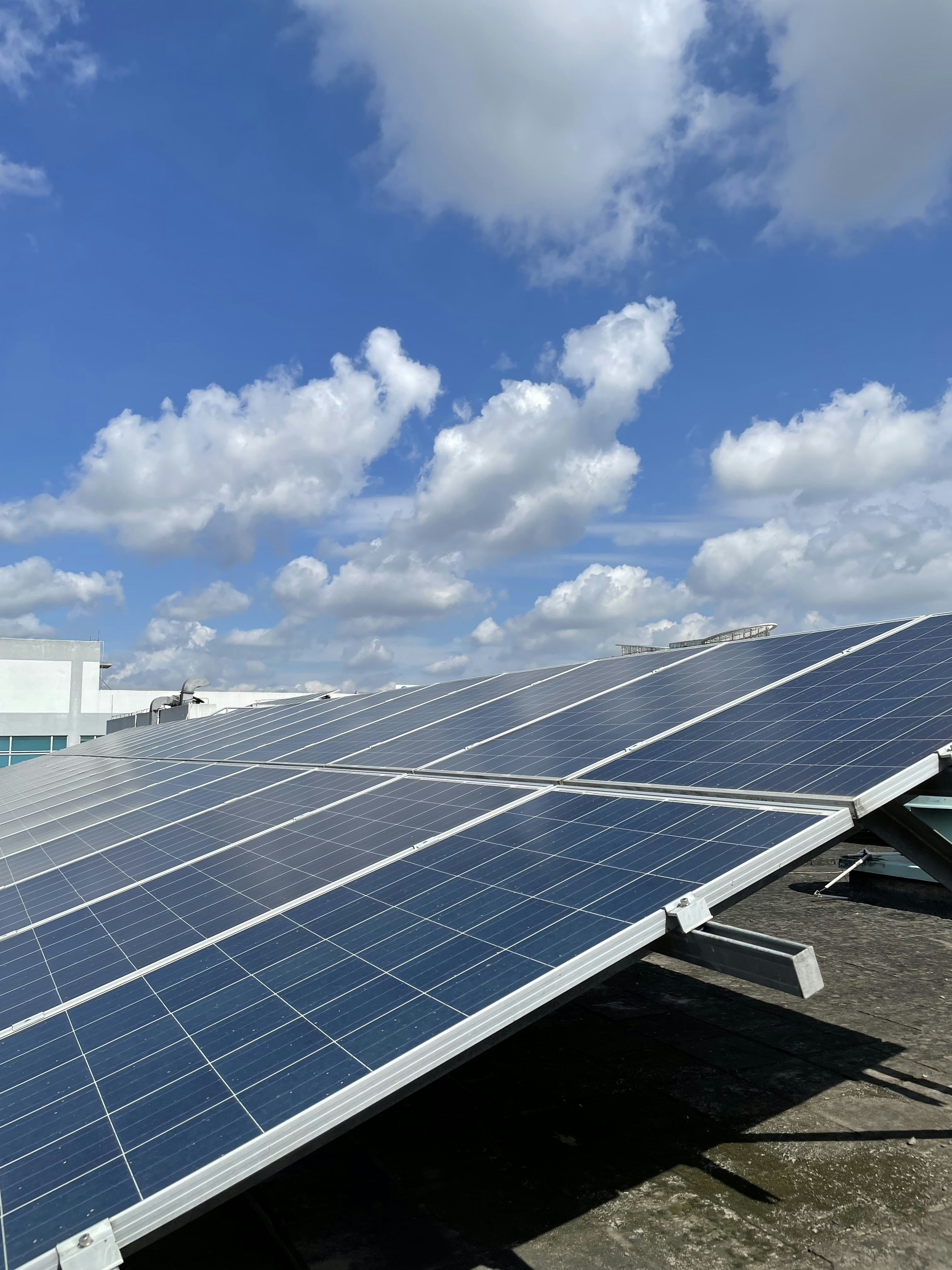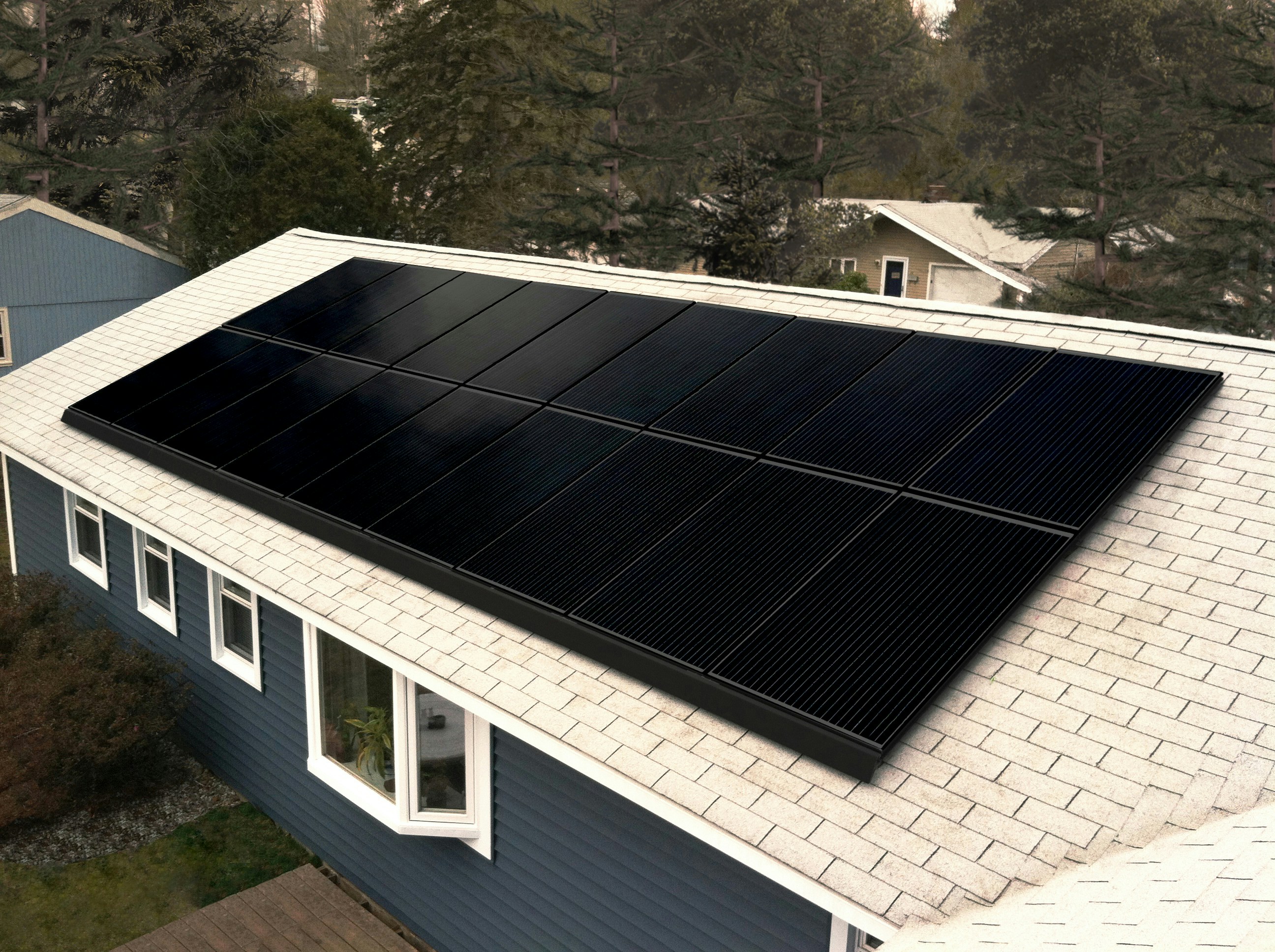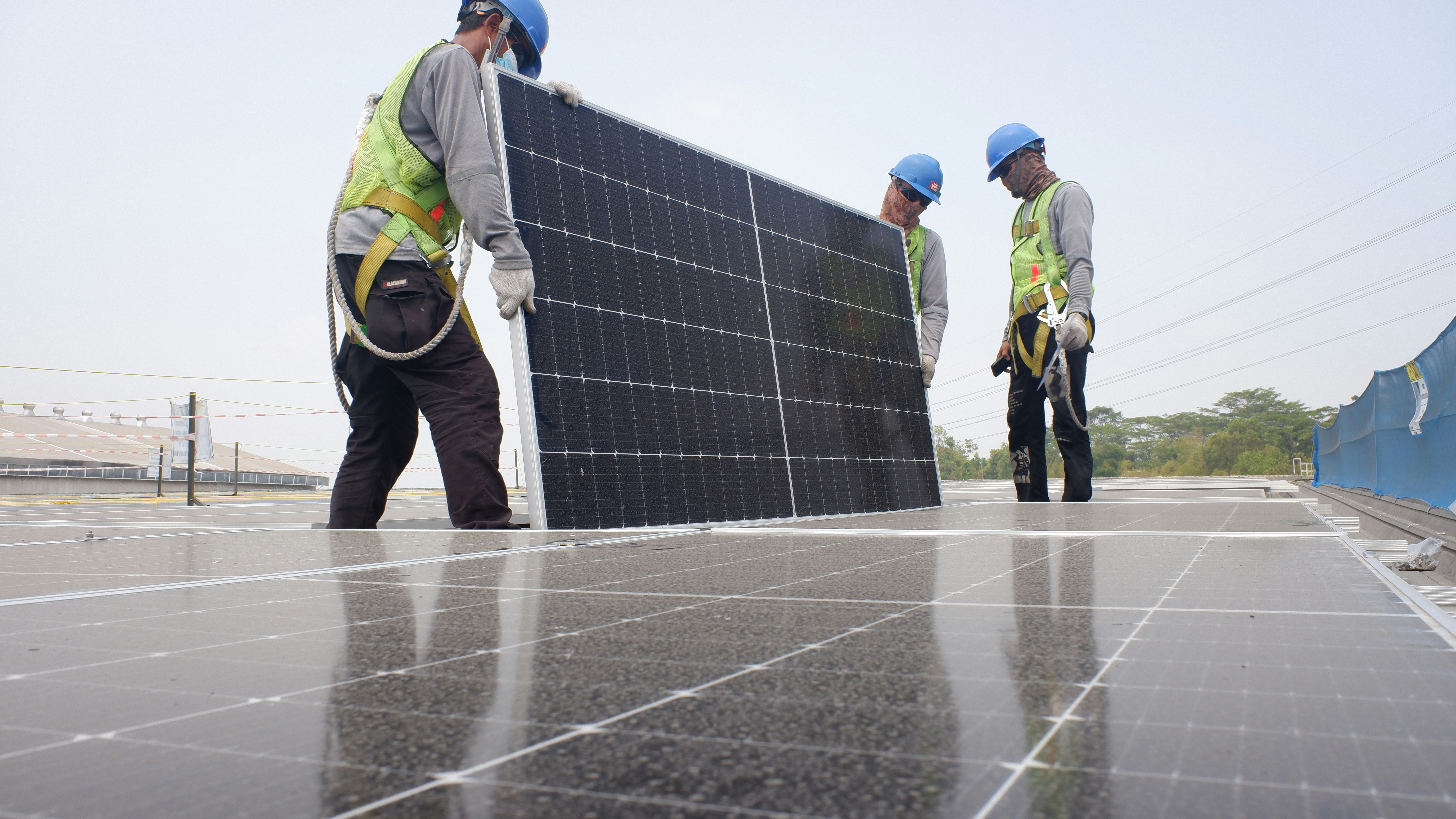Introduction to Solar PV Systems
Solar photovoltaic (PV) systems have emerged as a popular solution for harnessing renewable energy, especially in regions like Punjab, India, where sunlight is abundant. At the core of a PV system are solar panels, which consist of numerous photovoltaic cells. These cells convert sunlight directly into electricity through the photovoltaic effect. When sunlight strikes these cells, a flow of electricity is generated, which can be used to power homes, businesses, and other applications.
A typical solar PV system comprises several essential components. Besides the solar panels, there are inverters, which convert the direct current (DC) electricity generated by the panels into alternating current (AC) electricity that can be used in households. Additionally, battery storage systems may be included to store excess electricity for use during non-sunny periods, ensuring a constant energy supply. Mounting structures, wiring, and other balance-of-system components support the efficient functioning of the entire system.
In Punjab, the adoption of solar PV systems holds significant promise due to various factors. The region enjoys high solar irradiance, which enhances the efficiency and output of solar power installations. Furthermore, the government has been promoting renewable energy through numerous policies and incentives, aiming for a greener future. This initiative is particularly beneficial for agriculture, which is a vital sector in Punjab, allowing farmers to reduce their dependency on expensive grid electricity.
The benefits of implementing solar PV systems are numerous. They not only contribute to reducing electricity costs but also play a crucial role in mitigating climate change by lowering greenhouse gas emissions. With rising energy demands, solar power offers a sustainable and reliable alternative. However, financing is often a significant barrier for many potential users. Understanding the importance of financing options will help make solar energy accessible to a broader audience, paving the way for a cleaner and more sustainable energy future in Punjab.
Understanding the Total Cost of Solar PV Systems
The financial commitment involved in purchasing and installing a solar photovoltaic (PV) system in Punjab, India, can vary significantly based on multiple factors. To effectively navigate the costs, it is essential to break down the total expenses into distinct categories: equipment, installation, maintenance, and potential hidden costs.
First and foremost, the primary component is the equipment itself, which includes solar panels, inverters, mounting structures, and associated wiring. Prices for solar panels can fluctuate based on brand, efficiency ratings, and technology advancements. Typically, more efficient panels might incur a higher upfront cost but can offer better long-term savings through increased energy production.
Next is the installation cost, which encompasses labor expenses for mounting the solar panels and integrating the system with the existing electrical setup. Depending on geographical location, complexity of installation, and labor rates in Punjab, installation expenses can vary widely. It is important to obtain quotes from multiple contractors to ensure a competitive rate and quality workmanship.
Maintenance is another crucial aspect to consider in the overall financial picture. While solar PV systems generally require minimal upkeep, occasional cleaning and periodic inspections are necessary to ensure optimal performance. These modest costs can add up over time, and budgeting for maintenance can prevent unexpected financial strains.
Additionally, potential hidden costs should not be ignored. This might include government fees, permits, or unexpected expenses arising during installation or maintenance. Conducting thorough research and obtaining a detailed estimate can help uncover these potential costs and provide a clearer understanding of the overall financial commitment.
By grasping the full financial implications involved in a solar PV system, prospective buyers can better assess their budget and make informed decisions regarding financing options.
Government Incentives and Subsidies in Punjab
The Punjab government, in conjunction with the Indian government, has established various incentives and subsidies to promote the adoption of solar photovoltaic (PV) systems. These initiatives aim to decrease the financial burden of installing solar energy systems for both residential and commercial customers. The primary program facilitating these advantages is the “Punjab State Solar Power Policy,” which provides several financial incentives for solar installations.
Under this policy, eligible applicants can benefit from direct subsidies that substantially lower the upfront costs associated with solar PV systems. The quantum of support varies based on system size and type, often amounting to a specific percentage of the total project cost. For instance, individual household installations may attract a subsidy of up to 30%, while larger setups intended for commercial use can receive significant rebate amounts. Moreover, reduced interest rates on solar loans are made available through various banking institutions under this policy.
To qualify for these incentives, applicants generally must meet specific criteria, such as project size limitations and technical guidelines for installation. Additionally, all solar PV systems must adhere to the regulations set forth by the Punjab Energy Development Agency (PEDA), which oversees the implementation of these incentives. It is essential for applicants to ensure that their installations are compliant and properly documented to avail of the financial assistance.
Furthermore, the government provides added incentives in the form of net metering systems, allowing homeowners and businesses to sell excess energy back to the grid. This not only enhances the return on investment but also promotes a green energy economy within Punjab. Collectively, these incentives and subsidies significantly alleviate the financial challenges associated with solar PV adoption, making it increasingly feasible for residents and businesses to transition to sustainable energy solutions.
Popular Financing Options for Solar PV Systems
Investing in a solar photovoltaic (PV) system can significantly reduce electricity costs and contribute to a sustainable environment, especially in Punjab, India. However, the initial capital required may pose a challenge for many individuals and businesses. Fortunately, several popular financing options can help ease this burden.
One common approach is obtaining a personal loan specifically designed for solar installations. Personal loans offer borrowers a fixed amount of money at a predetermined interest rate. This option allows for flexibility, as it can be utilized for various solar system sizes. Nevertheless, in certain cases, interest rates might be higher compared to other financing methods, which affects the overall cost savings derived from using solar energy.
Another prevalent choice is bank financing, which generally involves securing a loan from a financial institution to fund the solar PV system. Banks often provide competitive rates and favorable loan terms, making this an attractive option for many consumers. However, prospective borrowers need to undergo background checks and demonstrate creditworthiness, which can be barriers for some individuals.
Leasing options present another viable path for financing solar PV systems. In a lease arrangement, a third-party company owns the solar system and allows the homeowner to use it for a monthly fee. This method often requires little or no upfront costs, making it accessible for those unable to invest heavily in a system outright. The downside is that the benefits from any potential rebates or tax incentives typically go to the leaseholder, rather than the person using the energy.
Lastly, Power Purchase Agreements (PPAs) are a popular option. In a PPA, the solar provider installs the system at no upfront cost, while the user agrees to purchase the electricity generated at a fixed rate. This arrangement minimizes initial expenses and allows users to benefit from solar energy immediately. However, the duration of PPAs can be lengthy, sometimes spanning 15 to 20 years, which may deter some investors.
In conclusion, exploring these financing options—personal loans, bank financing, leasing, and PPAs—can help individuals and businesses in Punjab effectively invest in solar PV systems, thereby maximizing sustainability while managing costs.
Role of Green Financing and Loans
Green financing refers to various financial initiatives that support environmentally sustainable projects, particularly in the renewable energy sector. In Punjab, India, green financing has gained traction as a viable means of financing solar photovoltaic (PV) systems. This approach not only addresses the growing energy needs of the region but also contributes to combating climate change by reducing greenhouse gas emissions. Various financial institutions and government bodies are increasingly endorsing green loans tailored specifically for solar energy projects, making them more accessible to homeowners and businesses alike.
In recent years, financial institutions across Punjab have begun offering dedicated green loan options with favorable terms to promote the adoption of solar technologies. These loans typically come with lower interest rates, extended repayment periods, and simple documentation processes. Such features make it easier for individuals and businesses to invest in solar PV systems, allowing them to harness the benefits of renewable energy while simultaneously enjoying potential cost savings on electricity bills.
Among the notable green loan options available in Punjab are those provided by public sector banks, cooperative banks, and non-banking financial companies (NBFCs). Some institutions have introduced loans that cover the entire cost of installation, including equipment purchase and installation fees. Additionally, government-led initiatives often accompany these financing options, including subsidies, tax incentives, and grant programs that further lower the financial barriers associated with adopting solar technology.
As the trend towards sustainable financing continues to grow, potential borrowers are encouraged to explore the available green loans specifically tailored for solar PV systems. These financing options not only facilitate eco-friendly investments but also contribute towards a more sustainable and energy-efficient future for Punjab. By leveraging green financing, individuals and businesses can actively participate in the transition to cleaner energy sources while benefiting from innovative financial solutions designed to support solar energy initiatives.
Understanding Solar Loans and Their Terms
As the adoption of solar photovoltaic (PV) systems in Punjab, India, continues to grow, many potential buyers are exploring financing options to invest in this renewable energy source. One of the most prevalent financing avenues available is solar loans. These loans specifically cater to individuals or businesses looking to finance their solar PV systems, providing the funds necessary to purchase and install the technology.
When considering a solar loan, it is essential to understand the interest rates typically associated with such financing options. Interest rates may vary significantly based on factors such as the lender, the borrower’s credit profile, and the specific terms of the loan. Generally, solar loans may offer lower interest rates compared to personal loans, making them a more cost-effective choice for buyers aiming to finance their solar investments. Most lenders also provide flexibility in terms of fixed or variable interest rates, allowing borrowers to select an arrangement best suited to their financial situation.
Repayment terms are another vital aspect of solar loans. They usually range from five to twenty years, allowing borrowers to choose a duration that aligns with their budget and financial goals. Shorter repayment terms might result in higher monthly payments but can lead to substantial savings on interest over time. On the other hand, longer terms will have lower monthly payments but might increase the total interest paid throughout the life of the loan.
It is crucial to understand the distinction between secured and unsecured solar loans. Secured loans are backed by collateral, such as the home itself, which reduces lenders’ risk and often results in lower interest rates. Conversely, unsecured loans do not require collateral but may carry higher interest rates due to the increased risk to lenders. Armed with this understanding, potential buyers can make informed decisions regarding their financing options for a solar PV system in Punjab.
Calculating Financial Returns on Solar PV Investments
Investing in a solar photovoltaic (PV) system can bring significant financial returns for homeowners and businesses in Punjab, India. To calculate these returns effectively, one must assess various factors, including savings from reduced electricity bills and overall payback periods. Firstly, homeowners should evaluate their current electricity consumption and the associated costs. By analyzing past utility bills, individuals can determine their average monthly energy usage in kilowatt-hours (kWh). This calculation will serve as a baseline for estimating potential savings fueled by solar energy production.
The next important step is to estimate the potential electricity generation of the solar PV system based on its capacity and local solar irradiance. Utilizing solar calculators or consulting with solar providers can help in forecasting how much energy the system can generate over its lifetime. This generated energy can then offset the electricity purchased from the grid, translating into direct financial savings. The financial return on investment (ROI) becomes more apparent when calculating the net reduction in monthly electricity expenses. By deducting the cost of solar system installation from the present value of expected savings, one can estimate the overall financial benefit.
Moreover, it is crucial to analyze the payback period, which is the timeframe needed to recoup the initial investment through savings. To calculate this, divide the total installation cost by the average monthly savings on the electricity bill. This period can vary based on the efficiency of the system, prevailing electricity rates, and local incentives available to solar adopters. Additionally, financing options such as loans or subsidies can also impact the overall cost, influencing the ROI. By evaluating these financial aspects, potential investors in Punjab can make informed decisions regarding their solar PV investments.
Case Studies: Successful Solar PV Financing in Punjab
The adoption of solar energy in Punjab has been significantly propelled by various successful financing models tailored to meet individual needs. One notable case is that of a medium-sized agricultural business that installed a solar PV system to reduce its electricity costs. This business managed financing through a combination of government subsidies and a bank loan, which covered about 70% of the installation costs. By taking advantage of state incentives, the owner was able to recover the investment within five years, leading to substantial annual savings on electricity bills. This solar intervention not only enhanced the operational efficiency of the farm but also reduced its carbon footprint, demonstrating the dual benefits of financial prudence and environmental sustainability.
Another illustrative case is a suburban household that opted for a lease-to-own solar PV model. This family faced challenges in terms of upfront costs, which is a common barrier for many prospective buyers. They leveraged a local solar financing company that offered attractive lease terms, allowing them to enjoy the benefits of clean energy without the heavy initial investment. Over the leasing period, the family noted a significant drop in their electricity expenses, which eventually led them to purchase the solar system outright after three years. This approach illustrates how flexible financing options can make solar energy more accessible for residential clients.
Additionally, several small businesses in Punjab have opted for community solar initiatives, where multiple stakeholders collectively invest in larger solar projects. This model has proven successful for local enterprises that might not have adequate rooftops or land space for individual solar installations. By pooling resources, these businesses not only share the initial investment risk but also enjoy the benefits of solar energy at reduced costs. Such collaborative efforts exemplify the potential for community-driven financing solutions to promote solar energy adoption effectively.
Conclusion and Next Steps
In this blog post, we have explored various ways to finance solar photovoltaic (PV) systems in Punjab, India. The transition to solar energy is not only a step towards sustainable living but also offers significant financial benefits over time. Understanding the financial implications and available options for financing a solar PV system is essential for homeowners and businesses looking to invest in renewable energy.
The importance of assessing one’s financial situation before embarking on this journey cannot be overstated. It is crucial to evaluate factors such as initial investment, potential savings on electricity bills, and any eligibility for government incentives. The analysis of these variables can provide clarity on the most suitable financing options available, from loans and subsidies to leasing arrangements. Each option has its own set of benefits and considerations that must align with individual or business circumstances.
Furthermore, stakeholders should take the initiative to research available grants, subsidies, or financing schemes specific to Punjab that may significantly lower the financial burden of installation. Engaging with local solar energy providers can yield insightful information on innovative financing solutions tailored to meet the needs of prospective customers. It is also advisable to compare different solar panels’ costs and performance to ensure a wise investment.
As you contemplate financing your solar PV system, taking actionable steps is paramount. Compile a list of questions to ask solar providers, outline your budget, and consider the long-term benefits of sustainable energy. By making informed decisions, you not only contribute to the environment but also secure a brighter financial future through energy savings. Transitioning to renewable energy represents an essential step towards a sustainable future in Punjab, India.












